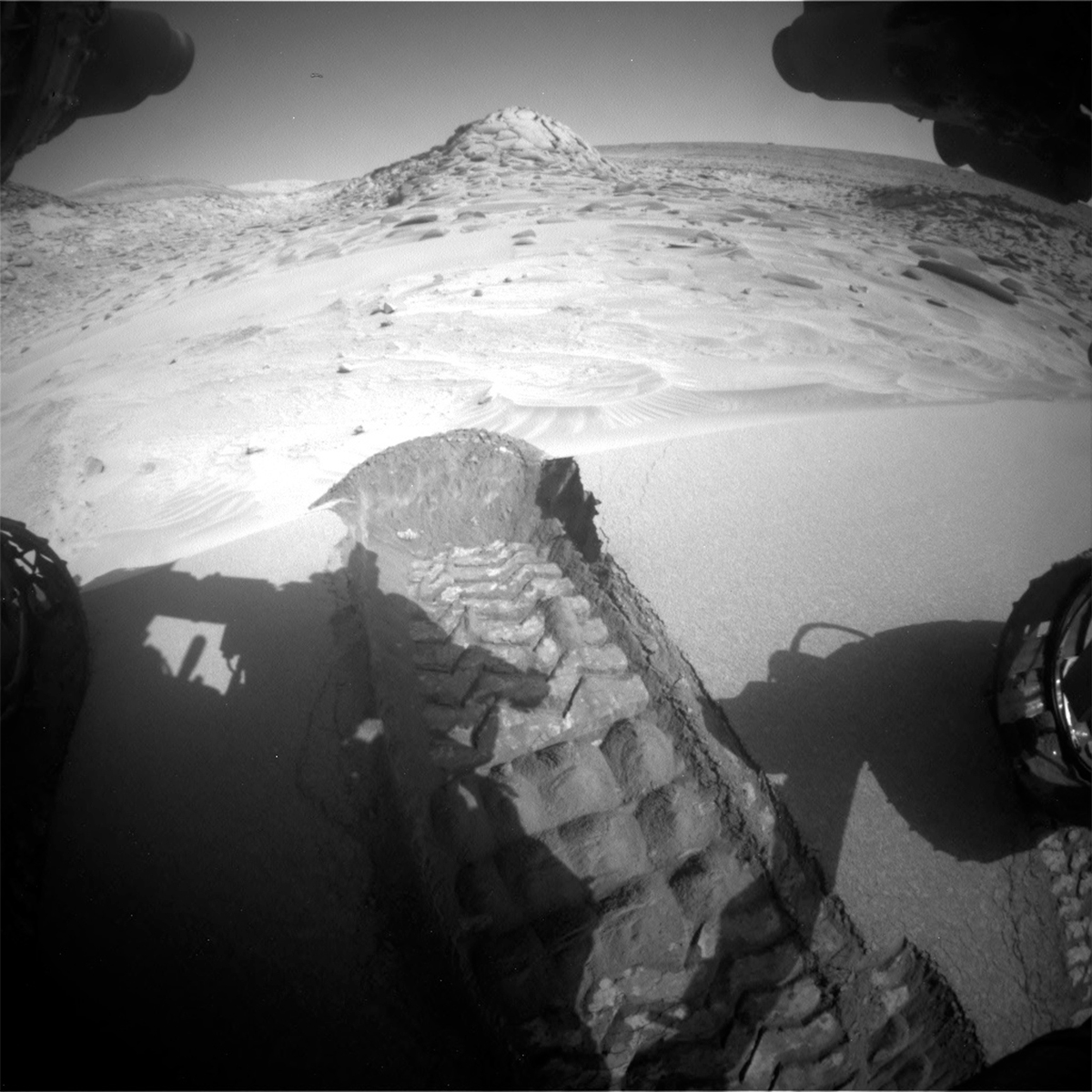2 min read

After a holiday/soliday weekend, we’re back to work with today’s single sol plan, and there’s a lot to pack into it.
After the drive, Curiosity’s wheel scuffed the rippled sand feature right in front of us, which you can see in the image above. This scuff – nicknamed ‘Taracua’ – is the subject of both ChemCam and Mastcam observations looking at both the surface and interior of the feature. Mastcam is also looking slightly further afield to examine a nearby stone ‘Kwaimatta,’ pebbles, and more distant rhythmic features, including another pass at a target we looked at almost 10 sols ago, ‘Itaquera.’ Even further afield, we have a view of the crater rim again which means we’re able to get a line of sight measurement to look at the amount of dust in Gale Crater. As well as these remote observations, we’re also doing contact science on the ripple with both APXS and MAHLI. With that done, we’re planning to drive to a possible drill location.
Even after all that, the sol isn’t finished yet. After every drive we take a standard set of post-drive imaging, to see where we’ve ended up and help plan further drives. We’re also doing more characterisation of atmospheric dust – this time with a solar tau. The twilight cloud season is still going strong, so we also included Mastcam imaging just after sunset to try and capture more of these glowing clouds.
My role today was ESTLK (ENV Science Theme Lead and Keeper of the Plan), but I was also joined by an ESTLK-in-training. Training new ESTLKs always involves a slightly different way of thinking. Some conventions or rules I take for granted may be confusing to someone without the context of many, many shifts under their belt, and there are oh so many acronyms we like to throw around. In this way it’s a bit like writing these blog posts, trying to think of how I can present things that may seem second nature to me to the rest of the world. Both are a really great way to slow down and appreciate the intricacies of the work.
Written by Alex Innanen, Atmospheric Scientist at York University







